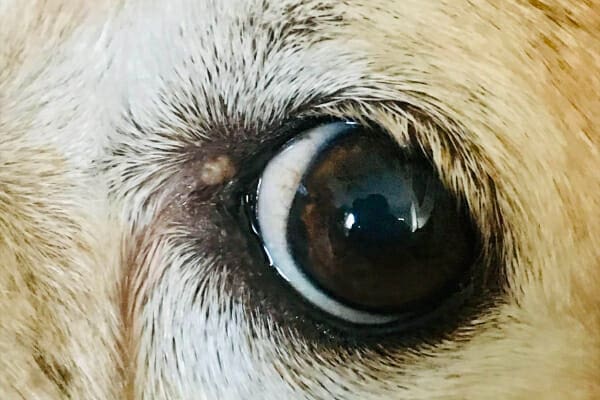Open Drainage of Cysts Procedure in Dogs
Due to the invasive nature of the operation, the vet will usually place the dog under a general anesthetic and shave the site where they plan to make the incision. Next, using a scalpel, they will cut through the intervening tissues to reach the cyst, which they will carefully slice open. The cyst can then either be allowed to drain by itself into a pan, or suction can be applied to remove the contents. After the cyst is drained, most vets will opt to remove it entirely (especially if it has become infected). The incision is then sutured closed and the dog allowed to awaken.
Dog Open Drainage of Cysts Considerations
Although a very potent means for dealing with problem cysts, open drainage is not without risks. Elderly dogs are especially at risk of cardiovascular failure when placed under general anesthetic, which may cause some owners to think twice before opting for the surgery. Another potential pitfall is the potential for infection of the incision site, though this can be counteracted by making sure the dogs living environment is thoroughly cleaned when they return from the clinic.
Where do sebaceous cysts tend to occur?
Sebaceous cysts can appear anywhere on your dog’s body. In very young dogs, sebaceous cysts will usually appear on the top of their heads. For dogs of all ages, the most common locations are the head, neck, chest, and upper limbs. Also, dogs can get a similar type of lump on the margin of their eyelid. These occur when secretions from the meibomian gland, a modified sebaceous gland that produces the oil portion of the tear film, build up and form a cyst. The picture below shows how a sebaceous cyst can occur on a dog’s eyelid margins.

Dogs also can develop sebaceous cysts at pressure points like the elbows. A variety of types of cysts, including sebaceous cysts, may occur on a dog’s paws. This can make walking uncomfortable. Additionally, some dogs may develop a condition called stud tail. It occurs when oily secretions build up from the supracaudal gland. This specialized gland is found at the base of the tail and is composed of sebaceous glands and some sweat glands. While not a true cyst, cases of stud tail do involve over production of sebum and the potential for infection of the gland.
How To Get Rid of a Dog Cyst Naturally
You are stroking your pet’s silky fur while relaxing on the couch, when your hand stumbles across a small, firm lump. Instantly, your mind goes to “the big C”—cancer. While some lumps and bumps can indicate a cancerous tumor, not all masses are malignant. In fact, many lumps are benign and, although they may grow, are not likely to cause terminal illness. Before panicking about your furry pal’s lump, schedule an appointment with your Scripps Ranch Veterinary Hospital veterinarian for an accurate diagnosis. There’s an excellent chance your cherished companion’s bump is one of the following five most common benign masses.